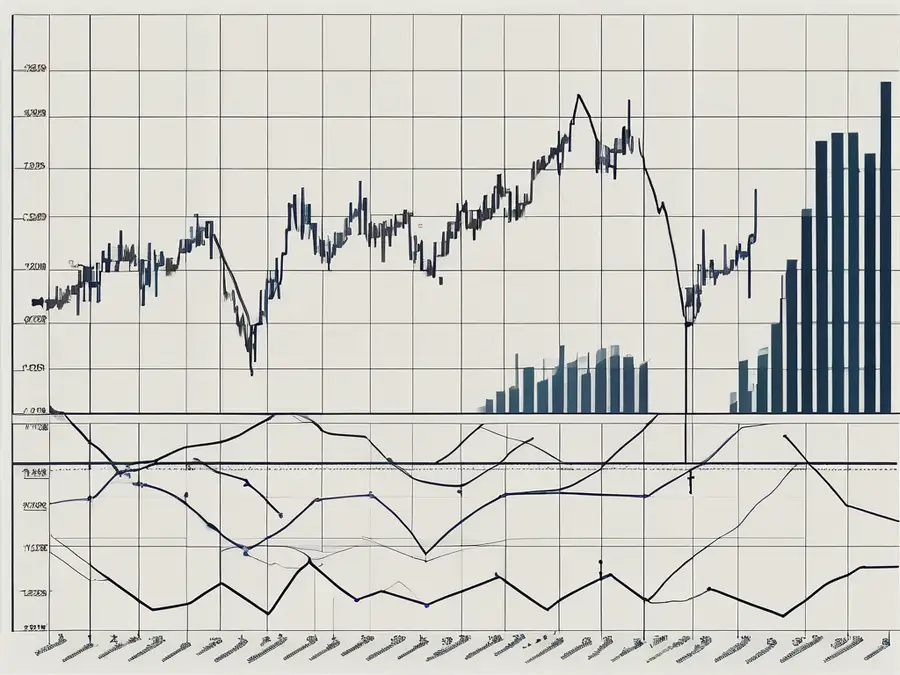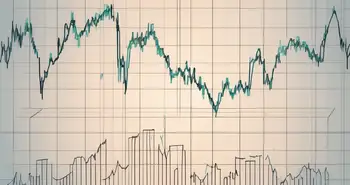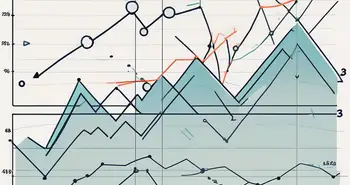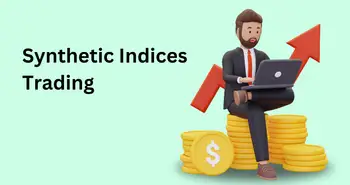Wyckoff Method: A Blueprint for Strategic Trading

Have you ever wondered why some traders seem to always be ahead of market movements, catching trends early and exiting right before reversals? What if you could decode the hidden actions of institutional investors and align your trades with the market's biggest players? The Wyckoff Method, developed nearly a century ago, offers exactly that—a strategic blueprint designed to help traders like you understand the market’s underlying mechanics.
This isn’t just another trading strategy filled with complex jargon. The Wyckoff Method is a time-tested approach that still applies today, especially in modern, fast-moving markets like cryptocurrency and stocks. In this guide, we’ll break down how you can leverage these principles to sharpen your trading decisions and identify the market’s most pivotal moments—whether you're a seasoned investor or just starting out.
Understanding the Wyckoff Method
To fully grasp the Wyckoff Method, it's crucial to understand the principles that underpin it. Mr. Wyckoff, a renowned stock market analyst, firmly believed that the stock market is not a chaotic and random entity, but rather a result of the activities of large institutions and smart money players. He argued that by carefully analyzing price, volume, and market structure, we can gain valuable insights into the intentions of these market movers.
Mr. Wyckoff's approach to market analysis was revolutionary for its time. He emphasized the importance of studying the actions of the “composite operator,” a term he used to describe the large institutional players who have the power to influence market trends. By closely observing their activities, Wyckoff believed that individual traders could position themselves on the right side of the market, increasing their chances of success.
One key principle of the Wyckoff Method is the importance of volume. Wyckoff argued that volume provides us with crucial clues about the strength or weakness of market movements. By analyzing the relationship between price and volume, we can identify significant market phases, such as accumulation and distribution.
During the accumulation phase, smart money players are quietly accumulating shares, often at lower prices, while the general market sentiment remains pessimistic. This phase is characterized by low volume and a lack of significant price movement. Wyckoff taught that once the accumulation phase is complete, the stock is ready for a markup phase, where prices start to rise steadily.
On the other hand, the distribution phase occurs when smart money players start selling their accumulated shares to the general public. This phase is characterized by high volume and a lack of significant price progress. Wyckoff emphasized that recognizing distribution patterns can be highly beneficial for traders, as it signals a potential reversal or downtrend in the market.
By combining the analysis of price, volume, and market structure, the Wyckoff Method provides traders with a comprehensive framework for understanding market dynamics. It helps traders identify potential buying and selling opportunities, enabling them to make more informed trading decisions.
The Five Steps of the Wyckoff Method
Now that we have a foundation, let's dive into the five steps of the Wyckoff Method:
1. Defining the Market Context
To effectively apply the Wyckoff Method, we must understand the overall market context. Is it in an uptrend, downtrend, or range-bound? By analyzing the market's current structure, we can determine the most probable next move.
When defining the market context, it is essential to consider various factors such as economic indicators, news events, and market sentiment. These elements provide valuable insights into the market's behavior and help us make informed decisions. For example, if the economy is showing signs of strength and positive news is driving investor optimism, it may indicate an uptrend. Conversely, if there is uncertainty or negative news, the market may be in a downtrend.
For instance, during periods of high volatility like in the case of Bitcoin and Ethereum price drops, you can often see shifts from accumulation to distribution as smart money reacts to global events, such as economic news or regulatory changes.
2. Identifying Accumulation and Distribution Phases
Accumulation and distribution phases are pivotal moments in a stock's price action. During accumulation, smart money accumulates shares at lower prices, preparing for an eventual markup. Distribution, on the other hand, occurs when smart money offloads shares to less informed investors, anticipating a markdown. Identifying these phases allows us to position ourselves for profitable trades.
When identifying accumulation and distribution phases, we look for specific price patterns and volume behavior. Accumulation often manifests as a sideways or slightly downward movement, accompanied by decreasing volume. Conversely, distribution is characterized by sideways or slightly upward price movement with increasing volume. These patterns provide valuable clues about the intentions of smart money and can help us anticipate future price movements.
When Bitcoin went through its accumulation phase in late 2020, institutional investors like MicroStrategy started buying large amounts while the public sentiment was still uncertain. When Bitcoin hit new highs in early 2021, the distribution phase kicked in as institutions and smart money started offloading their holdings.
3. Understanding the Role of Trends
Trends play a vital role in the Wyckoff Method. By recognizing the trend direction and its strength, we can ride the momentum and increase our probability of success.
Remember, the trend is your friend!
When analyzing trends, we consider multiple timeframes to gain a comprehensive understanding of the market. We identify the primary trend, which represents the long-term direction, and the secondary trends, which are shorter-term fluctuations within the primary trend. By aligning our trades with the dominant trend, we increase the likelihood of favorable outcomes.
For instance, recognizing a primary trend during Bitcoin’s 2021 bull run or the 2022 bear market could have helped traders align their strategies with the larger market forces, ensuring they took advantage of these major moves.
4. Recognizing Reversal Patterns
Reversal patterns provide valuable entry and exit signals. Wyckoff Method teaches us to look for signs of market exhaustion and reversal, such as climactic action, uptrend climax, and distributional tops. By acting upon these patterns, we position ourselves ahead of the crowd and capitalize on market turns.
When recognizing reversal patterns, it is crucial to combine price action analysis with volume analysis. Reversals often occur when price reaches extreme levels, accompanied by a surge in volume. This indicates a shift in market sentiment and can be an opportune time to enter or exit a trade. By patiently waiting for these reversal patterns to develop, we can avoid false signals and improve our trading accuracy.
5. Timing Your Trades with the Wyckoff Method
Timing is key in trading, and the Wyckoff Method helps us make well-timed entries and exits. By combining our analysis of market context, accumulation/distribution phases, trends, and reversal patterns, we can pinpoint optimal trading opportunities. Mastering this step is crucial for consistent profitability.
When timing our trades, we consider multiple factors, including the alignment of various Wyckoff Method principles, the overall market conditions, and the risk-reward ratio. By waiting for a confluence of favorable factors, we increase the probability of successful trades. Additionally, we use technical indicators and chart patterns to confirm our analysis and fine-tune our entry and exit points.
Using tools like Morpher’s AI insights can enhance timing even further. By aligning Wyckoff’s principles with real-time data, traders can make better-informed decisions on when to buy, hold, or sell.
Why Wyckoff Works: The Advantages
Now that you understand the foundations and steps of the Wyckoff Method, let's explore its advantages:
Enhancing Trading Decisions
The Wyckoff Method equips us with a systematic approach to analyzing the market and making trading decisions. By focusing on price, volume, and market structure, we can filter out noise and make informed choices based on market realities.
Predicting Market Trends
Through the Wyckoff Method, we gain the ability to identify potential trend reversals and capitalize on emerging trends. This expertise allows us to align ourselves with the market flow and stay one step ahead of the competition.
Risk Management with the Wyckoff Method
Risk management is an essential part of any trading strategy. The Wyckoff Method provides us with guidelines on where to place stop-loss orders and how to manage risk during different phases of market cycles. It helps us protect our capital and minimize potential losses.
Common Misconceptions about the Wyckoff Method
Before we wrap up this ultimate guide, let's address some common misconceptions about the Wyckoff Method:
Overcoming Misunderstandings
The Wyckoff Method is often perceived as complex and difficult to understand. However, with proper study and practice, anyone can become proficient. It's all about breaking down the process step by step and continuously honing your skills.
Debunking Wyckoff Method Myths
There are various myths surrounding the Wyckoff Method, such as the idea that it's a crystal ball for predicting market movements. In reality, the Wyckoff Method is a tool that helps us analyze the market objectively and make informed decisions based on probabilities—not certainties.
Frequently Asked Questions (FAQ)
Q: Can the Wyckoff Method be applied to any market?
A: Yes, the principles of the Wyckoff Method can be used in various markets, including stocks, forex, cryptocurrencies, and commodities. However, it's essential to adapt your analysis to the specific characteristics of each market.
Q: How long does it take to master the Wyckoff Method?
A: Mastering the Wyckoff Method requires time, dedication, and practice. Depending on your level of commitment and prior trading experience, it may take several months to become proficient. Remember, consistency is key, and learning from both wins and losses is crucial to growth.
Q: What is your personal advice for aspiring Wyckoff traders?
A: My advice would be to start with a solid foundation. Invest time in studying the Wyckoff Method, reading books, taking courses, and practicing your analysis on historical charts. Additionally, seek guidance from experienced Wyckoff traders who can provide mentorship and support.
By immersing yourself in the principles and techniques of the Wyckoff Method and continuously honing your skills, you'll be well on your way to becoming a proficient trader. Remember, trading success is a journey, not a destination!
Ready to put the Wyckoff Method into practice and elevate your trading to the next level? Join Morpher, the revolutionary trading platform that embodies the innovation and flexibility required for modern investing. With Morpher, you can seamlessly apply the principles of the Wyckoff Method across a diverse range of markets, from stocks to cryptocurrencies, without the burden of fees or liquidity constraints. Embrace the power of fractional investing, short selling, and up to 10x leverage to maximize your trading strategies. Experience the future of trading with the safety and control of a self-hosted Morpher Wallet. Sign Up and Get Your Free Sign Up Bonus today, and start your journey with a platform that's as dynamic and forward-thinking as you are.

Disclaimer: All investments involve risk, and the past performance of a security, industry, sector, market, financial product, trading strategy, or individual’s trading does not guarantee future results or returns. Investors are fully responsible for any investment decisions they make. Such decisions should be based solely on an evaluation of their financial circumstances, investment objectives, risk tolerance, and liquidity needs. This post does not constitute investment advice.

Painless trading for everyone
Hundreds of markets all in one place - Apple, Bitcoin, Gold, Watches, NFTs, Sneakers and so much more.

Painless trading for everyone
Hundreds of markets all in one place - Apple, Bitcoin, Gold, Watches, NFTs, Sneakers and so much more.









